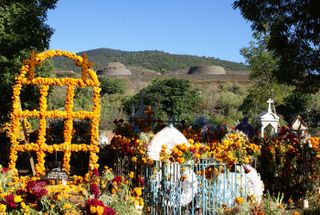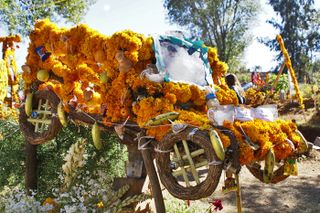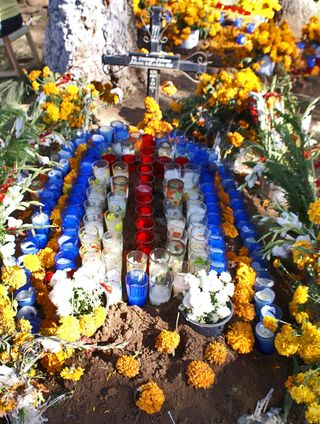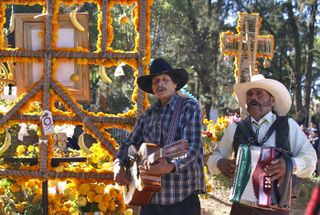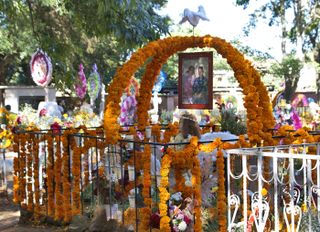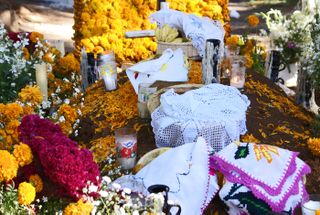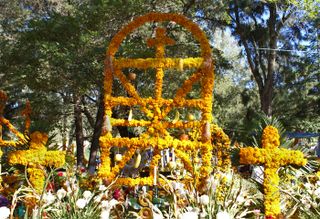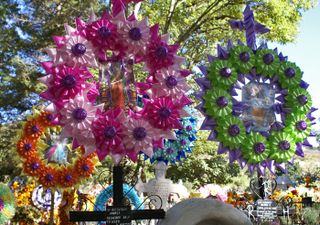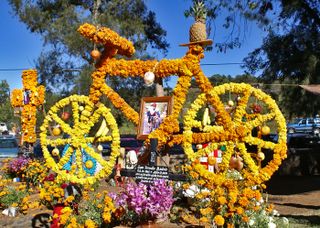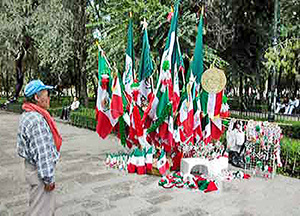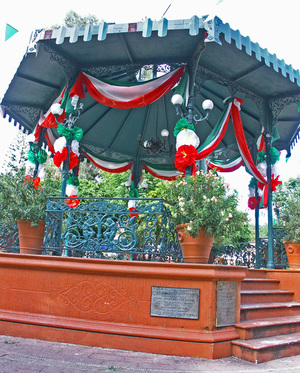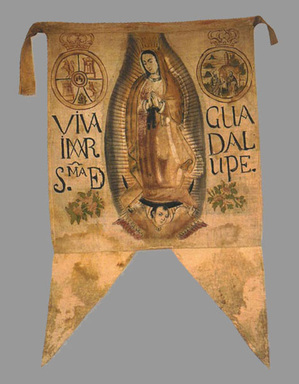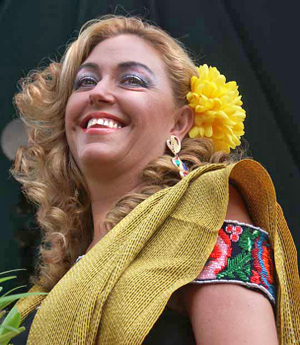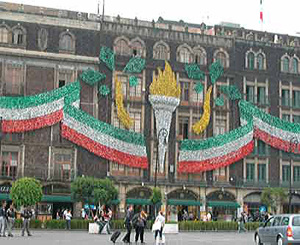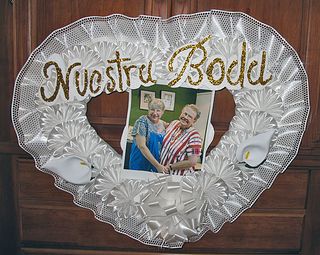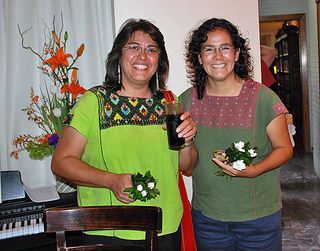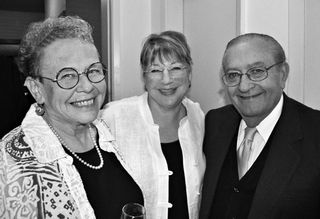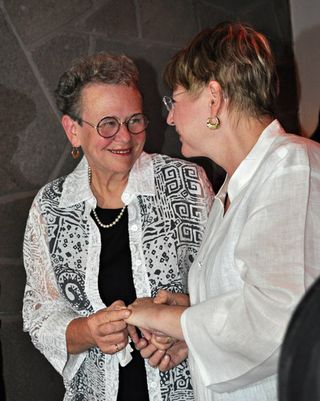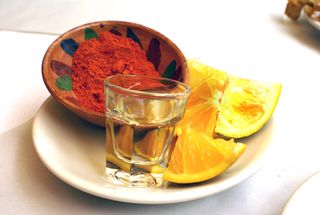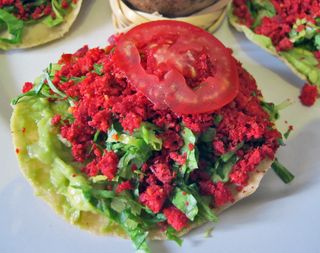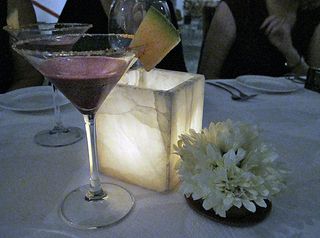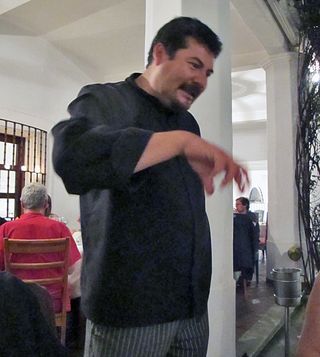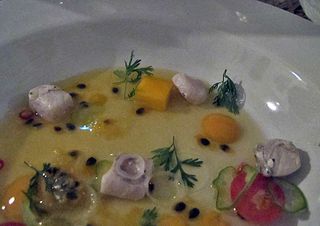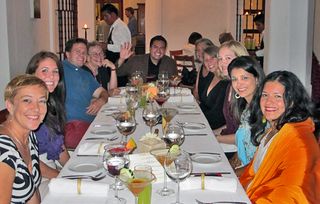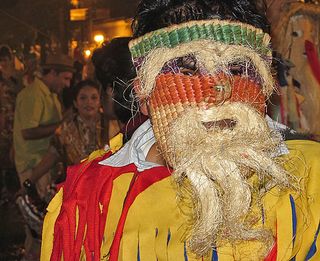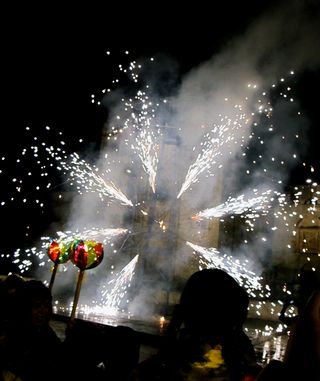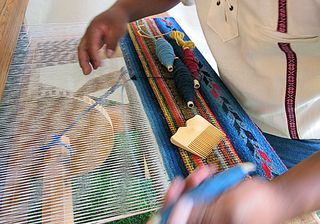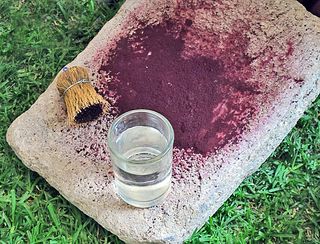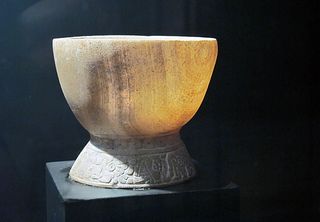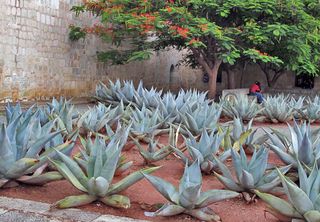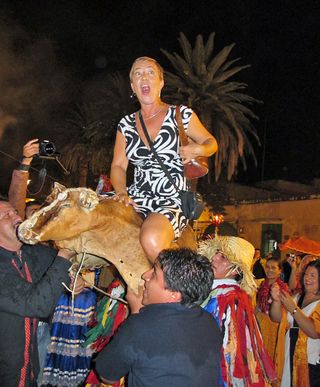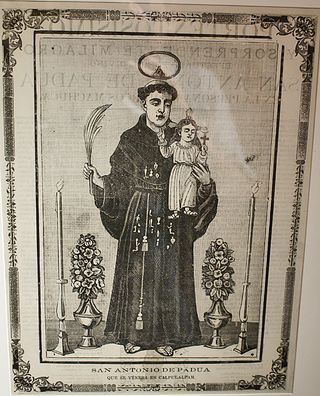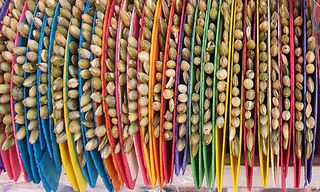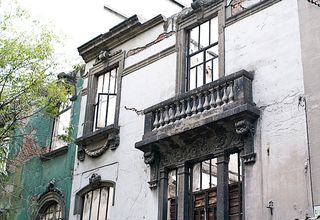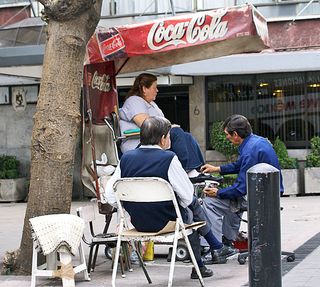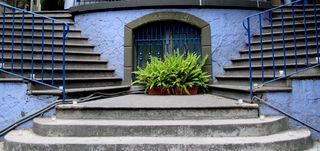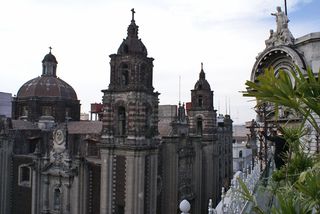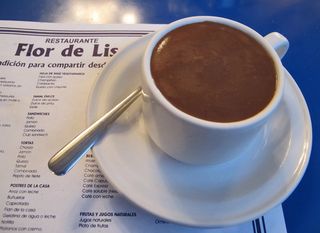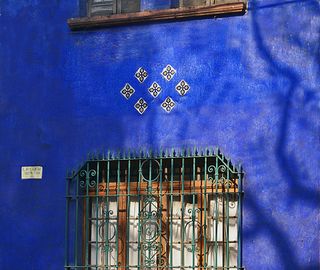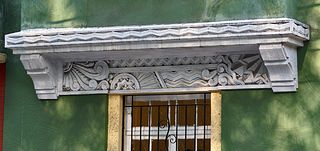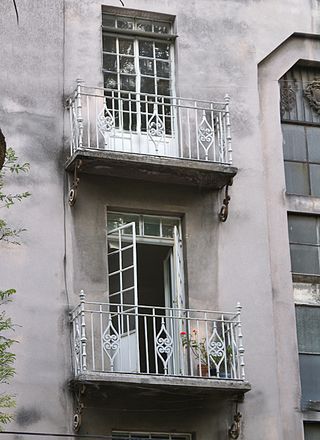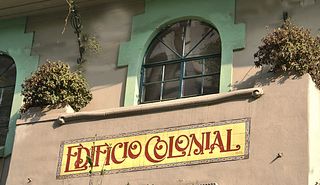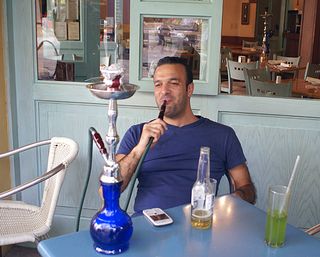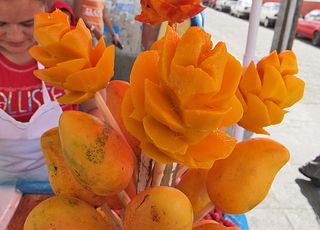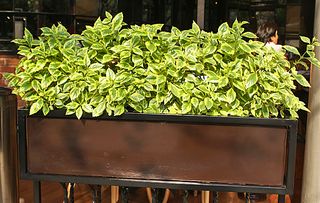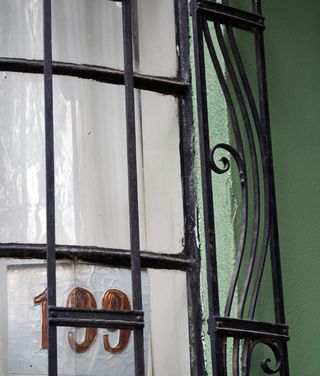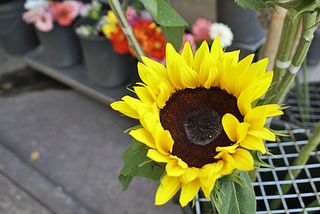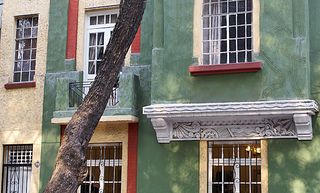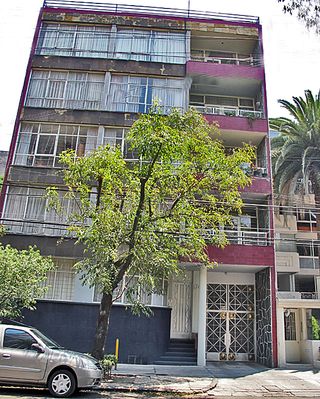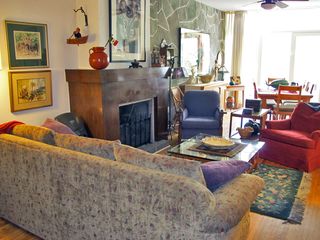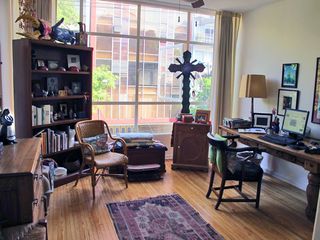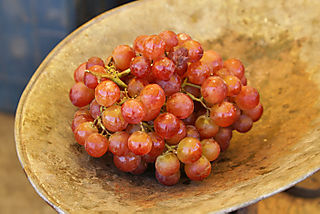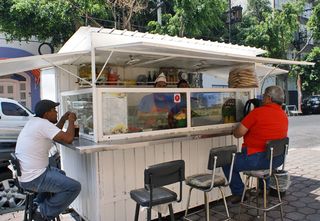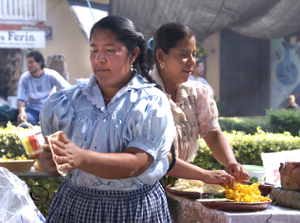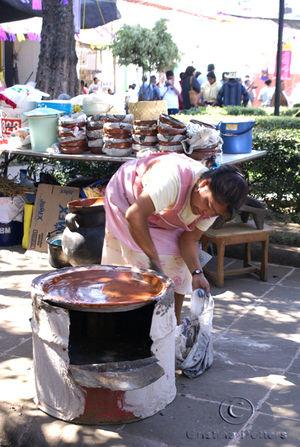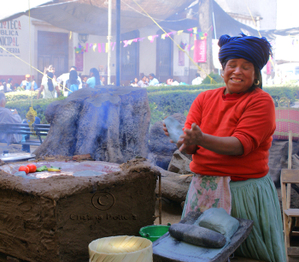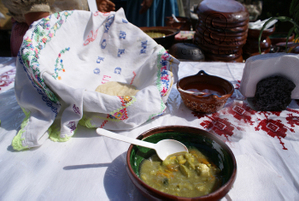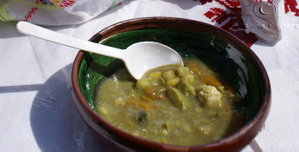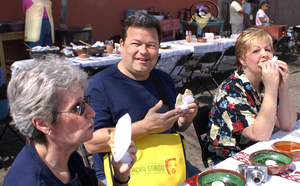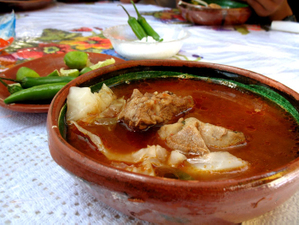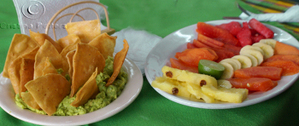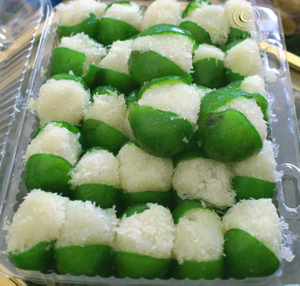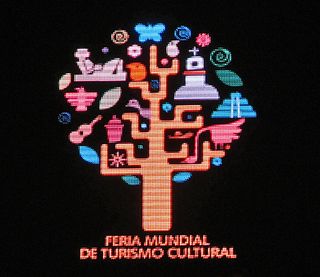
The World Cultural Tourism Fair logo, all lit up for the fair's opening night at Morelia's Teatro Ocampo.
For the second year in a row, Morelia, Michoacán was chosen as the site of the Feria Mundial de Turismo Cultural: the World Cultural Tourism Fair. Hot on the heels of Mexico City's FITA (International Tourism Fair of the Americas) at the end of September, Morelia captured a world-wide crowd of numerous exhibiting countries–including Indonesia, Slovakia, and Japan–plus twenty Mexican states, and several corporate exhibitors, all designed to attract tourism and travel both to Mexico and to their own venues.

Mexican federal tourism secretary Gloria Guevara Manzo with Mexico Cooks!, photographed at the Feria Mundical de Turismo Cultural opening night cocktail party. The party, held in the central patio of Morelia's beautiful mid-17th century Palacio Clavijero, included music, folkloric dancing, drinks, food, as well as great opportunities to make new acquaintances and hug old friends.
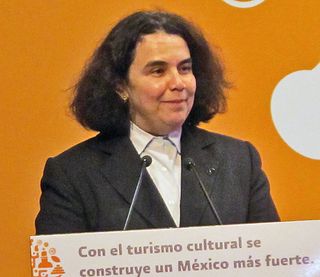
The delightful president of CONACULTA (Mexico's Consejo Nacional para la Cultura y las Artes–the national arts council), Dra. Consuelo Sáizar, spoke to inaugurate the FMTC, along with national tourism secretary Gloria Guevara Manzo, Michoacán's Governor Leonel Godoy, Michoacán and local Morelia tourism directors, and other state and national dignitaries.
The objective of the annual world cultural tourism fair is to offer a platform for global tourism industry operators, including travel agents, state and national tourism representatives from various international countries and Mexican states, and to ensure growth in this arm of the tourist industry. National Tourism Secretary Gloria Guevara Manzo assured the attendees that the event would enrich and strengthen the goals of the Mexican national tourism agreement, particularly in its sixth strategic pillar.
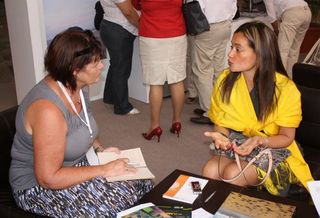
Michoacán state tourism secretary Lic. Thelma Aquique (right, in yellow) takes time out from the fair's intense schedule of events to talk with an attendee. Photo courtesy Estado de Michoacán.
During the three-day cultural tourism event, visitors, buyers, and exhibitors alike were treated to the best that Michoacán and Mexico have to offer. From the ceremonial cutting of the opening ribbon to exhibitions of Michoacán's folkloric dancing, regional foods, and the artisan work from several Mexican states, the booths filling Morelia's Casa de la Cultura (State Cultural Center) were packed with foreign and national buyers seeking ways to promote tourism.
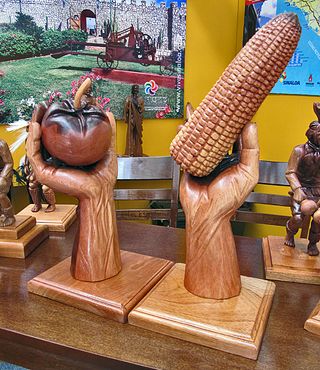
Wood carvings from master sculptor Jesús Ursino Ramos Cota of Sinaloa. Tomatoes and corn are the two major agricultural products of Sr. Ramos's home state.
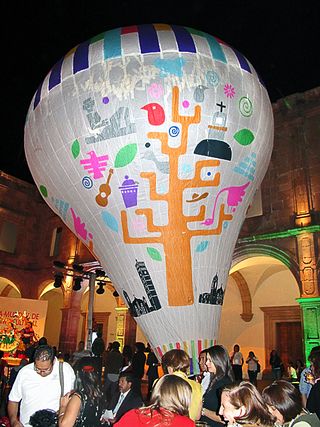
A gigantic hot air balloon made of paper. In Mexico, these are called globos de Cantoya. Their name comes from Sr. Joaquín de la Cantoya y Rico who lived in Guanajuato in the past century and allegedly began making these balloons. They are made of hundreds or even thousands of individual sheets of papel de china (tissue paper) and are expanded by a flame-generated hot air device carried in a small basket inside the balloon. This globo de Cantoya, two stories high, bears the logo of the 2011 Feria Mundial de Turismo Cultural. Click to enlarge the photo and see the connections of the tissue paper sheets.
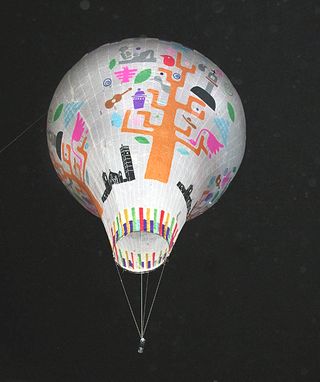
To the delight of the crowd, the giant paper balloon sailed off successfully into Morelia's night sky.
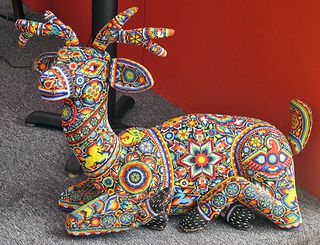
This wooden indigenous Huichol sculpture of a deer, a bit more than two feet long from head to tail, is completely covered first with beeswax and then with thousands of individually hand-placed tiny beads. This particular sculpture originated in and was brought to the fair by representatives of the state government of Nayarit. Click to enlarge any photo for a better view.
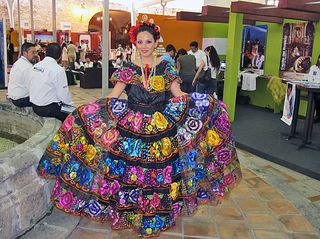
Mexico's southernmost state, Chiapas, was represented at the Casa de la Cultura tourism booths by this lovely young woman in her ropa típica chiapaneca (typical dress of Chiapas). Entirely hand-sewn and hand-embroidered, the dress is worn in a folkloric ballet or for other folkloric events.
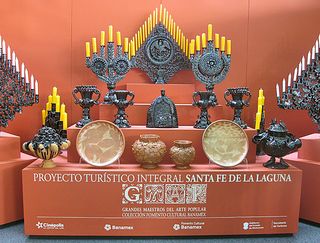
Banamex, one of Mexico's prominent banks, is a strong supporter of traditional arts and crafts and their makers throughout the country by way of its program Fomento Cultural Banamex, A.C.. The Banamex stand featured clay work from Santa Fe de la Laguna, Michoacán, as well as the extraordinary book Grandes Maestros del Arte Popular Mexicano (Great Masters of Mexican Popular Arts), which Banamex publishes.
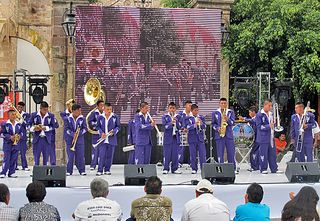
This excellent brass band, dressed all in purple, played a public concert in the Plaza del Carmen, just behind the Casa de la Cultura, seat of the FMTC. While they played, their concert was also projected on the big screen behind them. The concert was part of the cultural program of the FMTC.
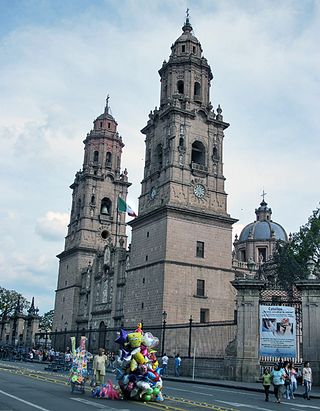
Morelia's cathedral. The city, named a UNESCO World Heritage site in 1991. Its 16th century pink cantera (stone) buildings, its European air, its exquisite regional gastronomy, and its hundreds of tourist attractions make it the ideal setting for the Feria Mundial de Turismo Cultural.
Looking for a tailored-to-your-interests specialized tour in Mexico? Click here: Tours.
Disclaimer: Marca País-Imágen de México is a joint public and private sector initiative designed to help promote Mexico as a global business partner and an unrivaled tourist destination. This program is designed to shine a light on the Mexico that its people experience every day. Disclosure: I am being compensated for my work in creating content for the Mexico Today program. All stories, opinions, and passions for all things Mexico that I write on Mexico Cooks! are completely my own.
